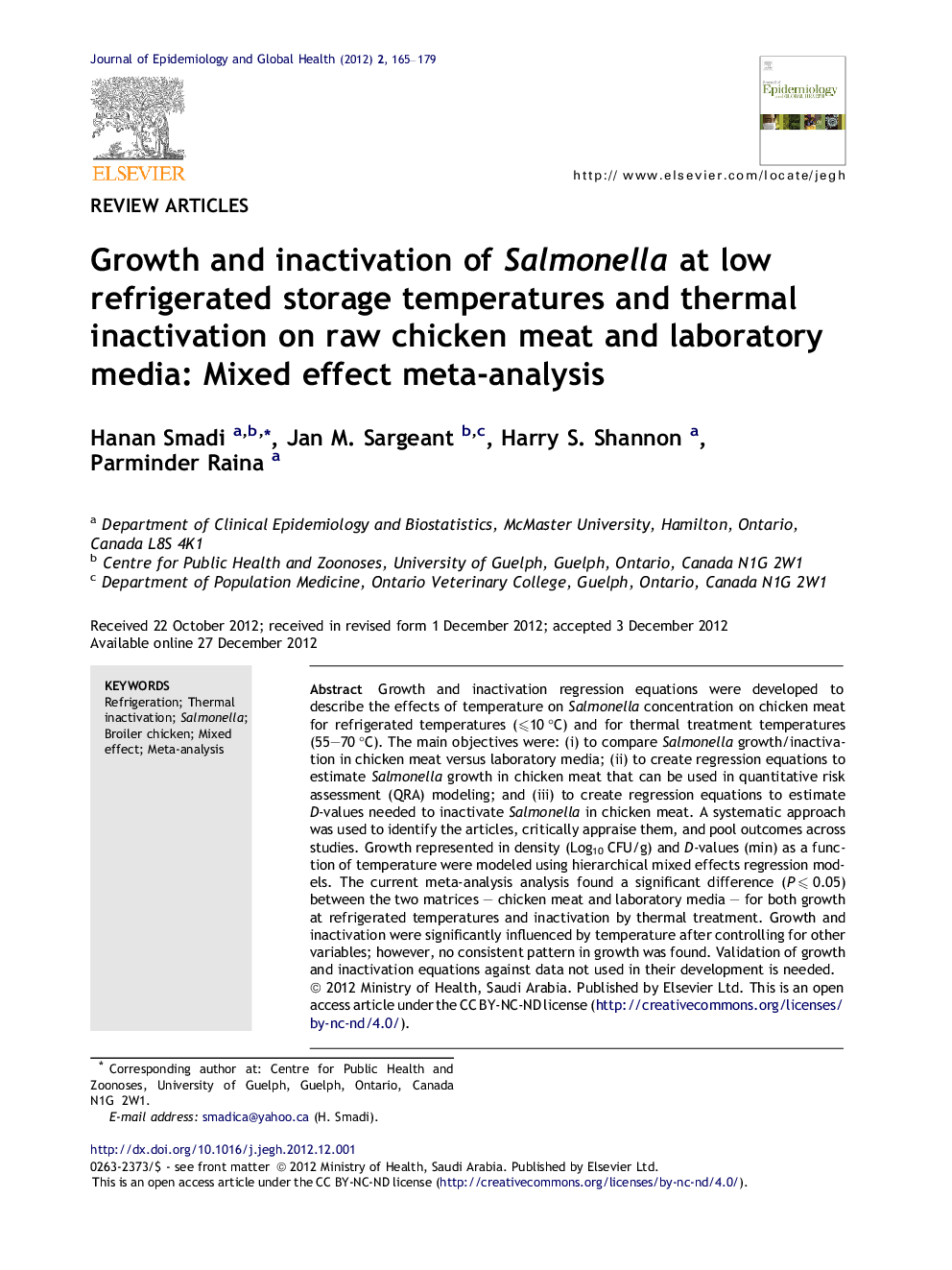| Article ID | Journal | Published Year | Pages | File Type |
|---|---|---|---|---|
| 3327622 | Journal of Epidemiology and Global Health | 2012 | 15 Pages |
Growth and inactivation regression equations were developed to describe the effects of temperature on Salmonella concentration on chicken meat for refrigerated temperatures (⩽10 °C) and for thermal treatment temperatures (55–70 °C). The main objectives were: (i) to compare Salmonella growth/inactivation in chicken meat versus laboratory media; (ii) to create regression equations to estimate Salmonella growth in chicken meat that can be used in quantitative risk assessment (QRA) modeling; and (iii) to create regression equations to estimate D-values needed to inactivate Salmonella in chicken meat. A systematic approach was used to identify the articles, critically appraise them, and pool outcomes across studies. Growth represented in density (Log10 CFU/g) and D-values (min) as a function of temperature were modeled using hierarchical mixed effects regression models. The current meta-analysis analysis found a significant difference (P ⩽ 0.05) between the two matrices – chicken meat and laboratory media – for both growth at refrigerated temperatures and inactivation by thermal treatment. Growth and inactivation were significantly influenced by temperature after controlling for other variables; however, no consistent pattern in growth was found. Validation of growth and inactivation equations against data not used in their development is needed.
